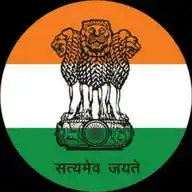
UPSC CSE EXAM ✅ PRELIMS™ UPSC UPSC UPSC UPSC UPSC UPSC Current Affairs BPSC MPPSC UPPSC CAPF RAS IAS
June 20, 2025 at 01:55 PM
🔆 Gupta Sculptures (4th–6th Century CE)
🎯 Peak of Indian classical art—noted for its grace, balance, serenity, and idealized beauty. A key feature of India’s Golden Age, blending Hindu and Buddhist themes.
📍 Key Characteristics:
✅ Material:
• Mainly cream-colored stone (sandstone)
• Some use of bronze (esp. in Buddhist art)
• Nudity avoided—emphasis on modesty
✅ Graceful & Idealized Figures:
• Striking balance of realism and idealism
• Slim waists, sensuous forms, proportioned anatomy
✅ Spiritual Serenity:
• Calm Buddhas in dhyana mudra
• Half-closed eyes, meditative expressions show deep spiritual transcendence
✅ Softness & Fluidity:
• Smooth curves and flowing drapery
• Drapery clings lightly, adding elegance
✅ Iconography:
• Buddha: Abhaya & Bhumisparsha mudras
• Hindu deities: Vishnu, Shiva, Lakshmi with conch, lotus, etc.
✅ Detailed Ornamentation:
• Intricate jewelry, crowns, robes
• Balanced aesthetics, avoids over-decoration
✅ Famous Examples:
• Seated Buddha (Sarnath)
• Standing Buddha (Mathura)
• Vishnu (Udayagiri Caves)
• Maheshvara, Terracotta art
🔚 Legacy:
Gupta sculptures are hailed for ideal form, serene expression, and refined technique—marking them as models of classical Indian sculpture.